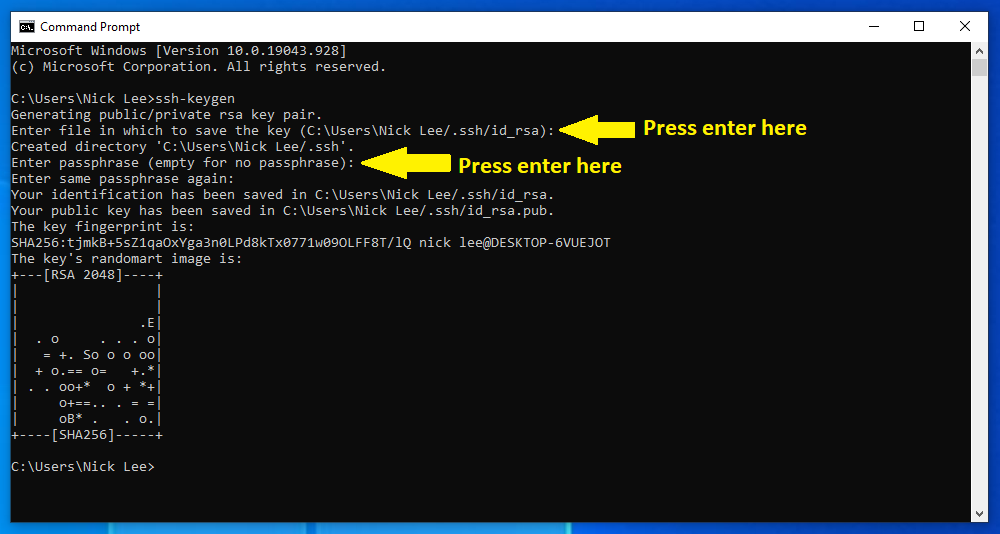Windows Instructions for Fall 2024 ISAs
Normally, all ISAs get Mac laptops. But in Fall 2024, there was a shortage of Mac laptops available, so a few ISAs got ThinkPads running Windows.Account setup instructions
First login to account: cscf-loan Initial password for cscf-loan is on the paper that came with your ThinkPad. You can also ask Daniel Huab or Nick Lee. You will be asked to change the password. Pick a new password that only you know! Optional: If you don’t like the account name “cscf-loan”, you can create a new account:- Next to the Windows Start button, search for “Other users”
- Click “Other users, System settings” from the search results.
- Click “+ Add someone else to this PC”
- If asked how this person will sign in, choose “I don’t have this person’s sign-in information” then “Add a user without a Microsoft account”
- Pick an account name, like your UW username, and a password.
- Click the account after it’s created and set its type to Administrator.
- Log out and use your new account.
- The cscf-adm account is for CSCF staff if we need to fix your computer. Please leave it alone.
- Some laptops are labelled “Ubuntu” or “dual boot”. Please ignore it. There is only Windows installed.
Accessing course accounts using smb-files.student.cs.uwaterloo.ca
Follow the instructions for "Mapping network drives" on CSCF how-to guides- For the Folder, use:
\\smb-files.student.cs.uwaterloo.ca\csNNNwhere csNNN is your course, for example cs116 - When logging in:
- Username is
TEACHING\userid(for exampleTEACHING\yc2lee) - Password can be set here: https://student.cs.uwaterloo.ca/password/auth

- This password is also used for
linux.student.cs.uwaterloo.caand CSCF's computer labs
- This password is also used for
- Username is
Accessing course accounts using linux.student.cs.uwaterloo.ca and SSH keys
SSH keys are used to access course accounts onlinux.student.cs.uwaterloo.ca.
Search for "Command Prompt" and open the app.
Run ssh-keygen command. Press enter to use the default save location and empty passphrase.
 Run the command:
Run the command: notepad %homepath%/.ssh/id_rsa.pub
This will open the id_rsa.pub file in Notepad. You should see a long line that starts with "ssh-rsa AAAAB3Nza....." Someone who already has access to the course account will have to add this to the course's ~/.ssh/authorized_keys file. You can also email the id_rsa.pub file to Nick, and he can add you.
After you've been added, back in the Command Prompt, run: ssh csNNN@linux.student.cs.uwaterloo.ca
replacing csNNN with your course.
- If you're asked to continue (yes/no), enter yes.
whoami command. It should say your course.
If typing the ssh command each time is too tedious, you can create a short cut to it: - Right-click blank area on desktop. Choose New => Shortcut.
- For the location, enter:
C:\Windows\System32\cmd.exe /k ssh csNNN@linux.student.cs.uwaterloo.ca
replacing csNNN with your course. - Pick a name for your short cut, such as "CS116 SSH"
Accessing course accounts using VSCode
Review the CS136 VSCode instructionsssh-keygen as described above.
Here is a sample SSH config for VSCode:
Host cs116@ubuntu2204-012.student.cs.uwaterloo.ca Host cs116@ubuntu2204-014.student.cs.uwaterloo.ca Host yc2lee@ubuntu2204-012.student.cs.uwaterloo.ca Host yc2lee@ubuntu2204-014.student.cs.uwaterloo.caWith this config, VSCode will let you choose between the 4 options when connecting.
FAQ
Question: A software I need is not installed. Can I install it myself? Yes. You have administrative access on your laptop, and can install software yourself. Just be careful that you download the program from the correct website! Question: What is SentinelOne? SentinelOne is an Endpoint Detection and Response tool that helps with the early identification of cyber threats across UW computing network. IST has an FAQ on SentinelOneIdeas, requests, problems regarding TWiki? Send feedback
